Ryan Coogler’s Sinners drops you into 1932 Mississippi with no warning and no soft introduction. The story opens with two brothers who return home to build a juke joint for their community. They bring money from Chicago and dreams of music and celebration. But the South they return to is still violent and still ruled by white landowners who speak with a smile and threaten with silence. Before anything supernatural enters the picture, the world already feels dangerous and unforgiving.
The film shows fields filled with cotton and workers who carry the weight of history on their backs. The Klan remains a quiet threat, and the church preaches redemption while rejecting any joy found outside its walls. Music offers escape but also invites judgment. Sammie plays his guitar with heart, but his father calls it a sin. The juke joint becomes a space of freedom, but that freedom feels temporary from the start.
Long before the vampires appear, the darkness feels real and familiar. The film asks whether joy can exist in a place built on pain. By the time the blood spills, the damage has already been done. The horror begins with the world, not with the monsters.
7 Scenes from Sinners that made us realise how dark that time was
1. The Chain Gang Scene

Slim rides with Sammie and Stack past a group of Black prisoners breaking rocks in the heat. The guards stand quietly while the men work in chains. This is not a flashback or exaggeration. It is normal.
Slim tells a story that should break the moment. His friend was accused of assaulting a white woman. The Klan dragged him away. They lynched him and mutilated his body. Slim does not pause. He just remembers.
The scene keeps moving. The men keep riding. No music softens the moment. The silence is louder. That’s how you know it happened before. And it will happen again. There are no vampires here. There is no horror effect. But this might be the darkest part of the movie. This is what normal looked like. Shackles on men. Dry fields. A murder that no one stopped. And a friend who can’t forget because it never ended.
2. The Juke Joint Firefight Aftermath
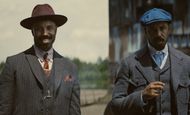
Smoke knew someone would come for them. He had weapons buried at the sawmill. He had his rifle ready. The Klan showed up before sunrise. They brought fire and arrogance.
Smoke was waiting. He aimed fast and shot first. He moved like a soldier. He had fought a war, and this was just another battle. But it should not have happened here. This was supposed to be a party. It was supposed to be theirs.
This wasn’t about vampires. It was about survival. Smoke was not just fighting strangers. He was fighting neighbors. Hogwood had smiled when he sold them the land. Now he came with guns. That shift tells you everything. The attack didn’t feel cinematic. It felt familiar. That’s the scariest part. Black joy had to be armed. Smoke won but bled alone. And the celebration turned into a graveyard. That’s what it meant to build anything at that time.
3. Sammie’s Confrontation in the Church
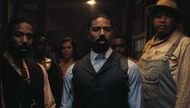
Sammie walks into the church, barely holding himself together. His body is torn up. His face is bruised. He looks for safety but finds none. His father looks at the guitar. Not the blood.
The preacher speaks only about sin. He tells Sammie to stop playing. He tells him to follow scripture. There is no welcome. There is only judgment. The church walls are white but there is no light here.
This moment shows the real divide. Not just between father and son. But between old belief and lived truth. Sammie does not speak much. He just holds the guitar tighter. His music saved him, but his father calls it evil. The pain here is layered. It’s not from monsters. It’s from home. The silence between them says more than the words. The scene doesn’t end in violence. But it ends in rejection. And that stays with you longer.
4. The Chain Reaction of Vampirism at the Juke Joint
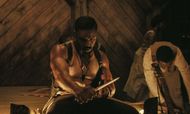
It starts slow. One bite. Then another. The juke joint goes quiet. The music stops. The dancing fades. The guests begin to change. One by one.
Mary is the first. Then Stack. The joy they had is gone. Their eyes go blank. Their movements turn stiff. It’s not violent at first. It’s quiet. That is what makes it worse. No screams. Just silence.
Remmick does not destroy the party. He repurposes it. This is what it looks like when something built by Black hands is taken over and sold back hollow. You see, the bodies still move. But their choices are gone. The vampires don’t just feed. They erase. This is not a horror sequence. It’s a warning. It reminds you that joy is not always protected. Even when it’s earned. The blood comes later. But the first thing to die is the freedom.
5. The Story of Emmett Till Foreshadowed
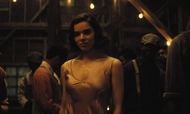
Smoke tells Sammie that Chicago is no different. It has taller buildings. It has more cars. But the hate is the same. The north only hides it better.
This is not just a line. It’s history. It points directly to Emmett Till. He was born in Chicago. He died in Mississippi. That journey feels present in this story. Sammie dreams of escape. But escape is an illusion.
The scene doesn’t show Emmett. It doesn’t need to. It gives you the train tracks. It gives you the longing. It gives you the truth. That no matter where you go, the weight still follows. This moment is not emotional by force. It just exists. And in doing so, it lands. It becomes part of Sammie’s fear. And part of ours. Because some trains don’t lead to safety. Some only bring you closer to danger with no sign that it will stop.
6. Delta Slim’s Monologue About White Audiences
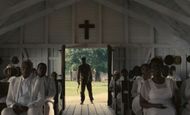
Slim leans back and speaks softly. He’s not angry. He’s certain. He tells Sammie the truth. The blues were not handed to them. It came from inside.
He says white folks like the music. They just don’t like the people who made it. That line stings. It hits with no raise in voice. Just a man who has lived long enough to know.
Slim has played in white homes. He has smiled while ignored. His music was loved. He was not. That contradiction lives in his face. It lives in every note. This moment explains the danger of performance. Not every audience sees you. Some only hear what they want. And leave the rest behind. Slim says it plainly. And it leaves no room for doubt. He is not asking for pity. He is explaining the rules. And that makes it land even harder.
7. The Lynched Friend’s Story in the Cotton Field
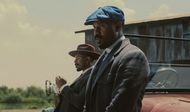
Stack and Slim walk through rows of cotton. The ground is dry. The sun is high. They talk about work. Then Slim mentions Rice. A friend. A musician. A target.
Rice played music at a house. He danced with a white woman. He smiled. That was enough. The Klan came for him. They lynched him and cut off his manhood. Slim tells the story like he’s told it before.
The field does not stop. The wind does not shift. This horror does not break the day. And that is what makes it real. It’s not a ghost story. It’s a memory. This happened. And Slim still walks. Still plays. Still breathes. That is what survival looked like. The scene does not beg for your tears. It does not slow down for drama. It just moves forward. And that tells you everything about how people had to live through it.
Follow for more updates.
Love movies? Try our Box Office Game and Movie Grid Game to test your film knowledge and have some fun!
